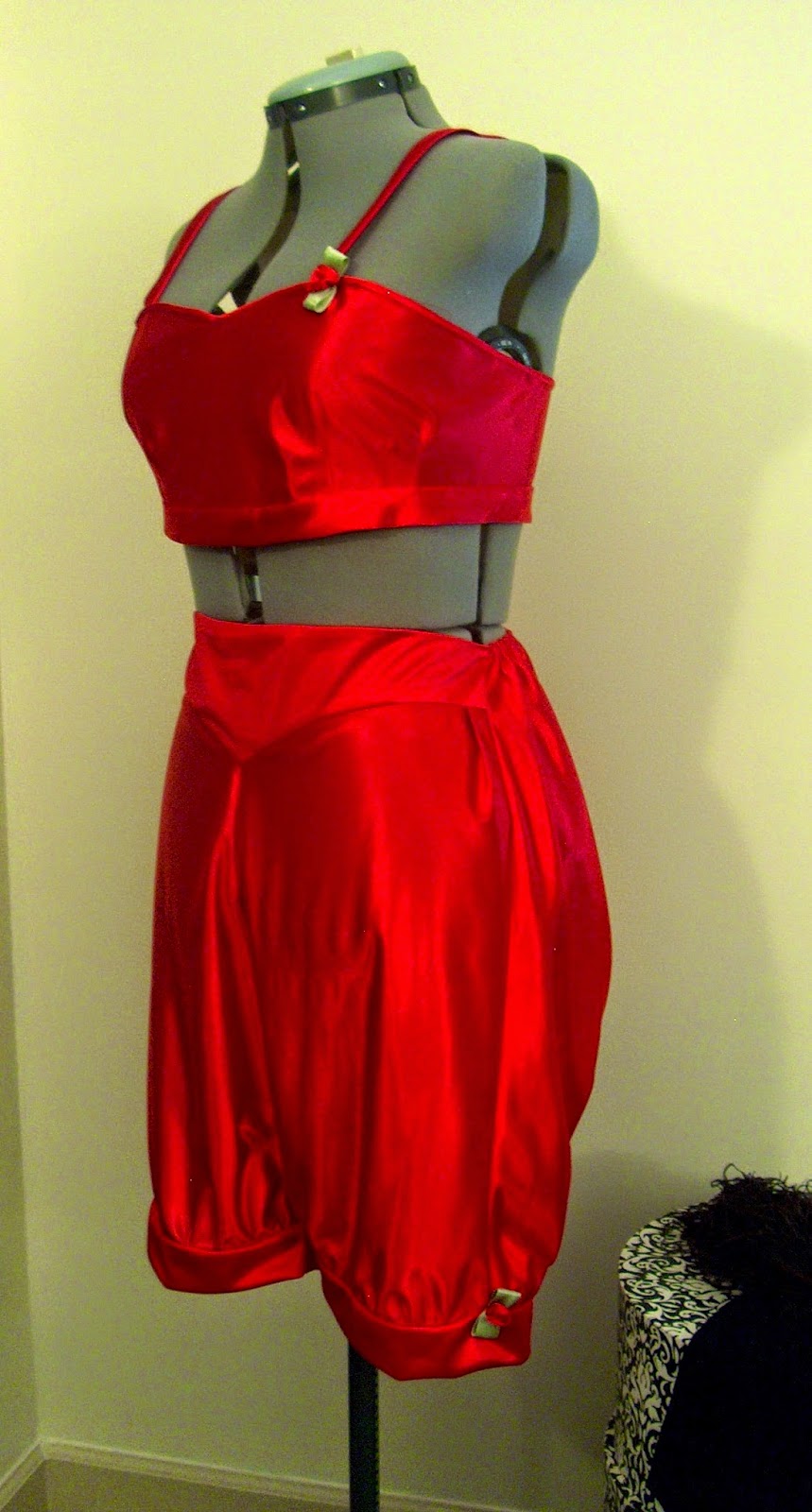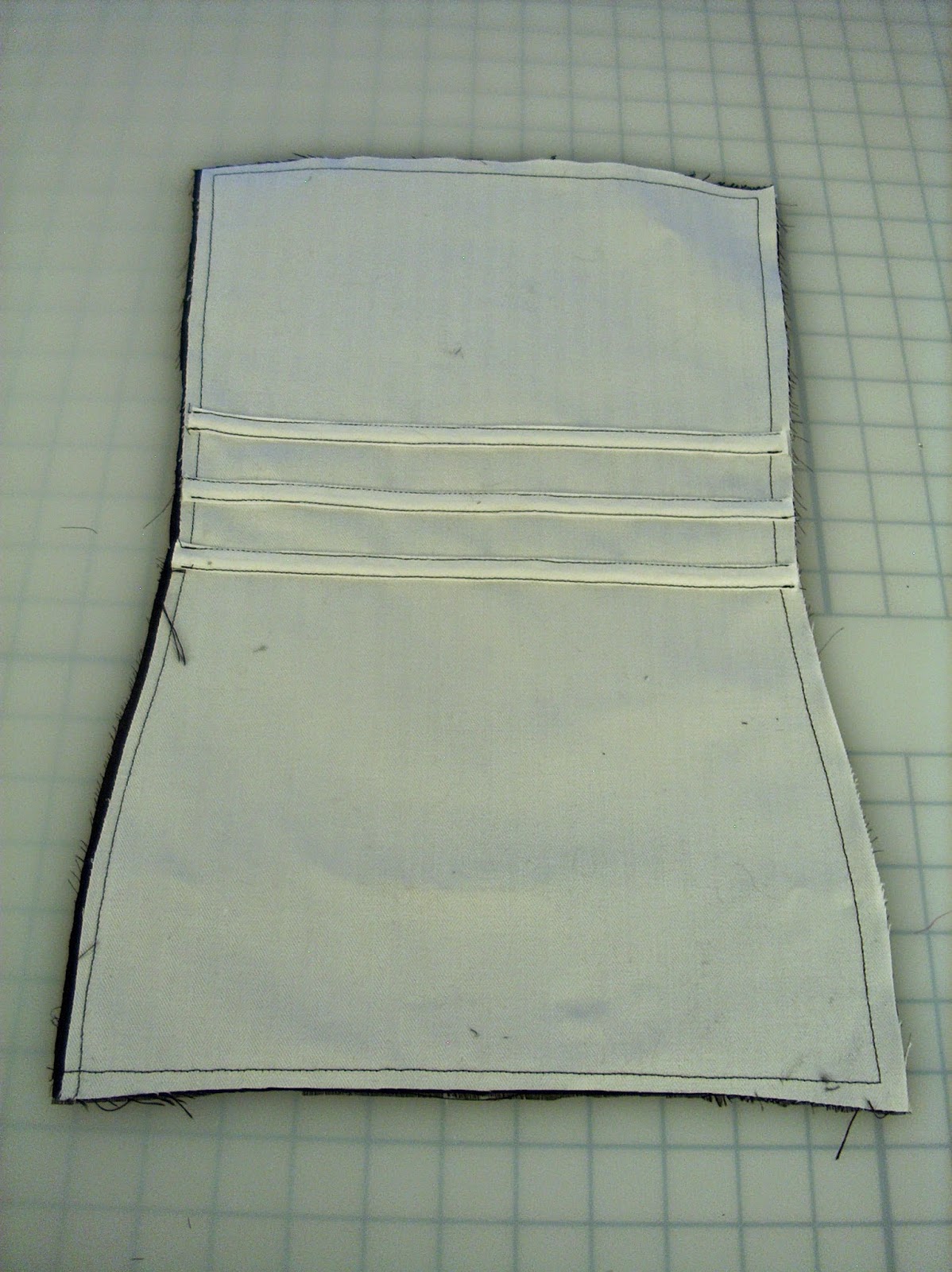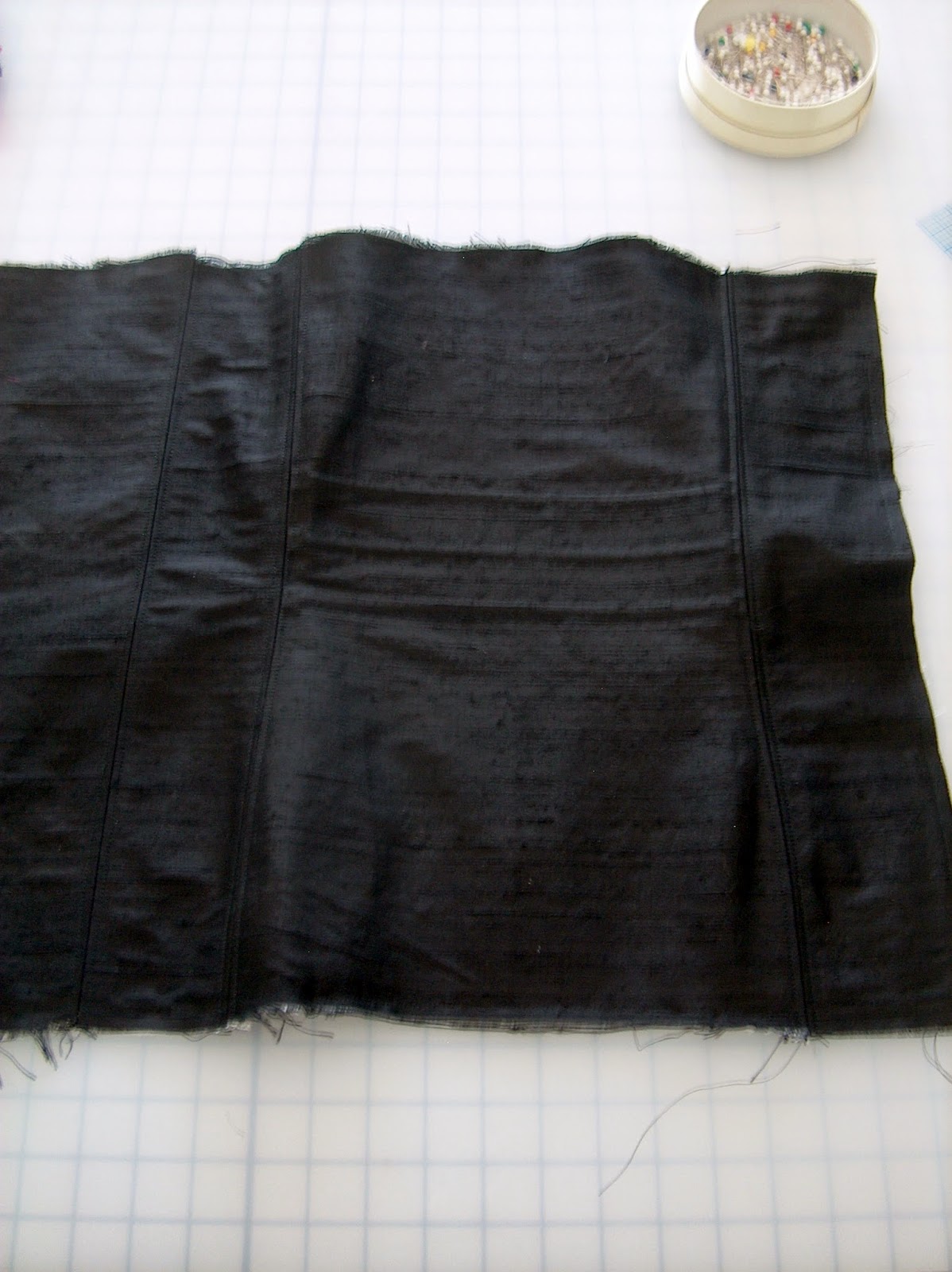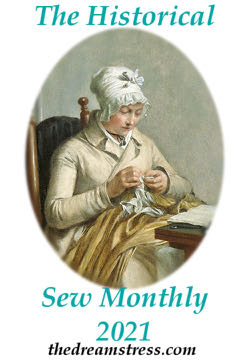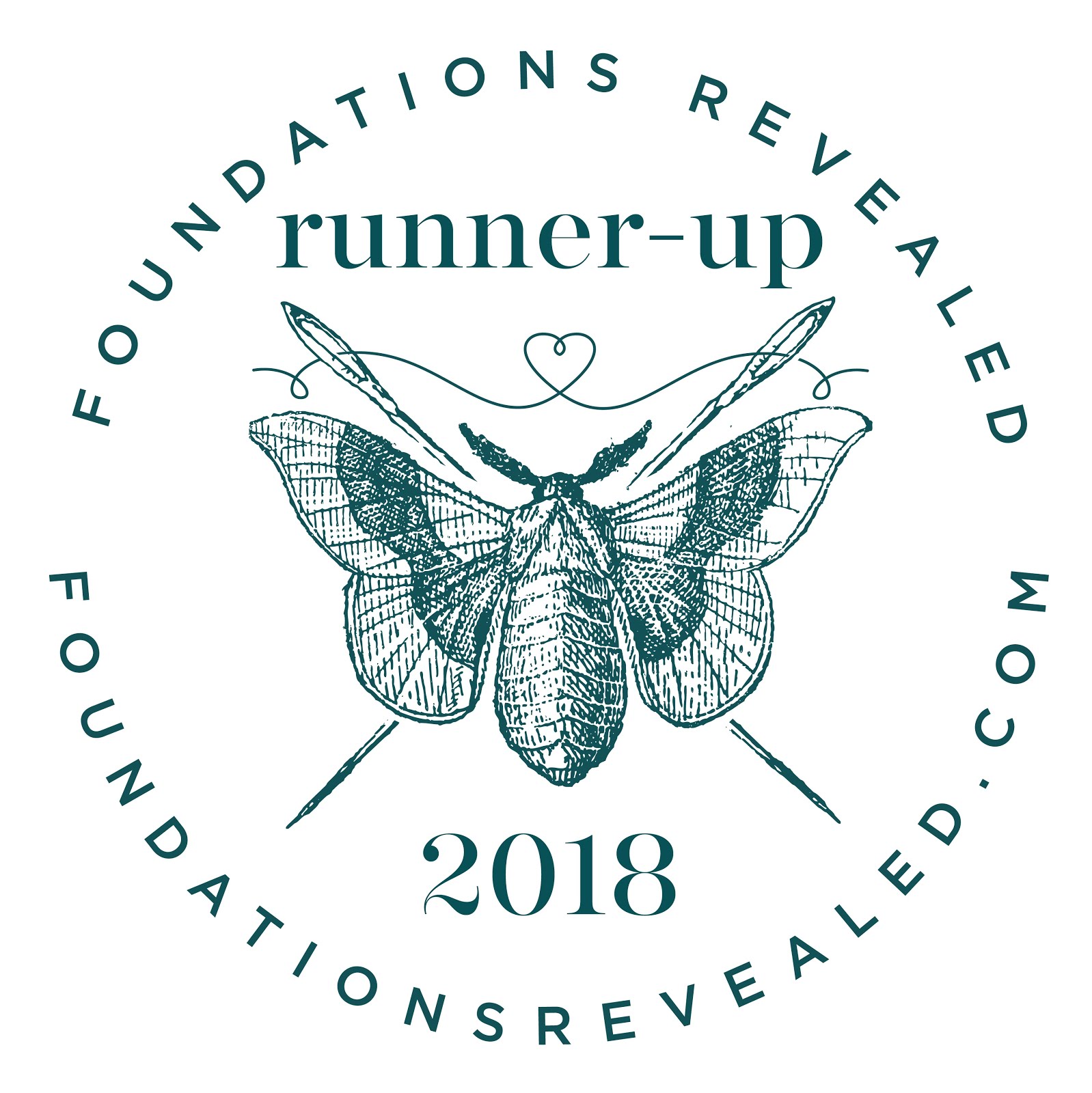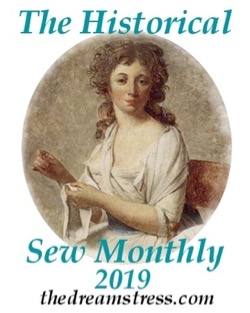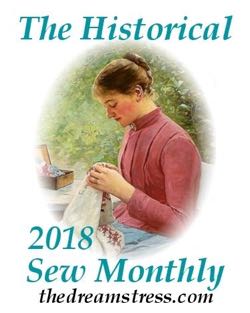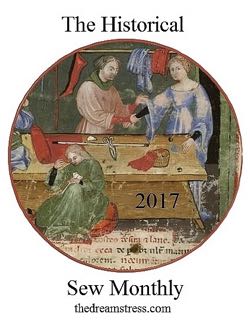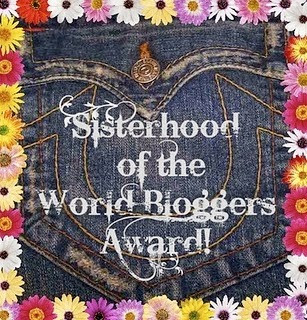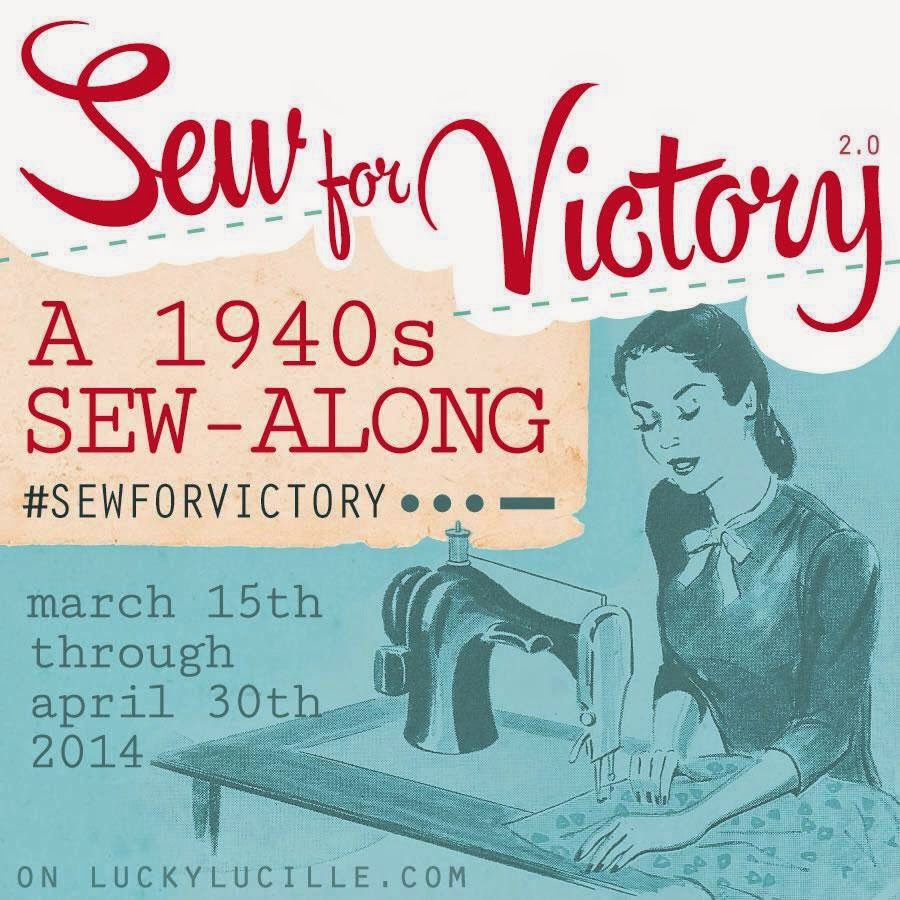This is an evening gown from Worth from the cover of Harper's Bazar March 17, 1894. "This superb gown is of very light ciel-blue satin bordered with black fur. It is further enriched with bead embroidery in iris design." Sigh. Wearing this gown is still my dream but much of the creation has come true. Are you curious? This will be the year and you will be told the whole story! But in time....in time.
As I do have the blue satin and it is the only blue I have in the remnant pile, the Historical Sew Monthly Challenge #2 - Blue is the perfect time for me to make an accessory for this gown. M'lady absolutely needs an evening bag and I shall make one for her.
From the moment I saw the inspiration I knew the gown should have crystals - Swarovski crystals! The history is that Daniel Swarovski's father owned a small glass-cutting factory. Sand, burnt limestone, and soda are melted together at extremely high temperatures to create glass. If lead is added a stronger and highly refractive glass is created which can be cut and polished like any gemstone. The secret to Swarovski crystals is in the cutting and polishing. In 1892 Daniel Swarovski patented an electric cutting machine that facilitated the production of crystal glass and so it seems perfectly understandable to me that the lady having her Worth gown made in 1894 would have Swarovski crystals embroidering her gown. And her reticule!
Like most things, purchasing in bulk is least expensive and 1,440 Swarovski crystals come in this envelope from Austria. This envelope is approximately $75 or $.052 per crystal.
They are beautiful!
But when the light hits them (or the photo flash) they take your breath away!
The first thing I do is enlarge the inspiration and study the design. This will be the design I use for the reticule.
In my online searches I locate a used purse frame. It is bent and has lost some of its glow, but I feel that this is the perfect frame for my reticule. With a blue satin remnant, a blue silk velvet fabric, crystals and the plan, I'm ready to begin.First I do the crystal embroidery using a hoop, a beading needle, and clear bead embroidery thread by Clover. I draw my design with a quilter's pencil and begin beading.
.
With 199 beads sewn, the design is finished.
My pattern for this reticule s a simple half circle. I cut both the satin and the velvet on the fold.
With right sides facing, I sew both the satin and the velvet from the fold up leaving the tops open just slightly larger than the frame opening. (1/4" seam allowances on the entire reticule)I cut a small opening in the lining which is my velvet, right in the center of the fold.
The satin is turned right side out and slipped into the velvet.
The curved edges are sewn. Then the satin outer layer is pulled through the hole that I cut in the velvet lining.
The velvet lining is then turned down into the inside of the satin outer layer. I've pressed the upper curved edge and now that edge is ready to be sewn to the frame. At one time the frame had holes for sewing the fabric onto the frame, but those were then covered with another piece of the frame.
I've found a thread that matches the frame and will sew the fabric directly to the frame design with tiny stitches.
Modern reproduction frames with holes work well and in this wild hot pink silk velvet reticule I made a while ago, I used seed beads inside and outside to anchor my fabric and thread.
Silk velvet is nice for a reticule and this was the same pattern I'm using for the satin. I sewed running stitches along the bottom of the hot pink silk velvet and the gathering made for a pretty lower edge.
I tried the same technique for the lower edge of the satin but the look wasn't the same and the crystals were distorted, so I removed the stitching and created a box bottom by just pushing the lower corners inside and making a tack stitch.
The crystal and blue satin reticule is ready for the ball!
Historical Sew Fortnightly
What It Is: Satin and Velvet Crystal Embroidered Reticule
The Challenge: #2 Blue
Fabric: Satin and silk velvet
Pattern: Self-drafted
Year: 1894
Notions: Used reticule frame, Swarovski crystals, bead embroidery thread
How historically accurate is it? Completely hand drafted and hand sewn using historically accurate materials
Hours to complete? 6 hours
First Worn: Costume College 2015
Total Cost: Fabrics were remnants, crystals approximately $11, used frame $4
Love,
Jeanette
.jpg)





























